Circulatory system:
We learned about the ways organisms take in nutrients.
Now we are going to look at how they move those nutrients (and wastes) around.
Simple organisms can, again, just use diffusion to move things around.
Bigger and more complex organisms need to have parts that move those nutrients around.
What are the important parts?
Any circulatory system must have three mains parts:
A fluid to carry the nutrients (i.e. blood)
Tube for that fluid to flow through (i.e. blood vessels)
A pump to push the fluid through the tubes (i.e. heart)
Different organisms handle this differently.
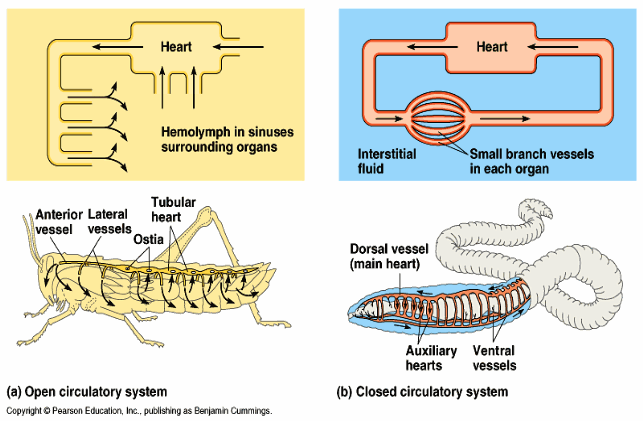
An open system has no pressure. A closed system has more control over the fluid (we have a closed system).
A closer look at humans (once again):
Our fluid is called blood.
Blood is composed of five major things:
Plasma
Red Blood Cells (RBCs)
White Blood Cells (WBCs)
Platelets
Nutrients (oxygen and sugar and other nutrients) and wastes (CO2)
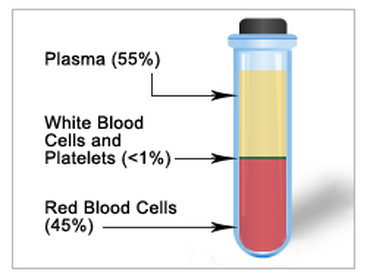
Plasma makes up the majority of your blood and is simply the fluid that carries everything else. It is mostly water although usually appears yellowish.
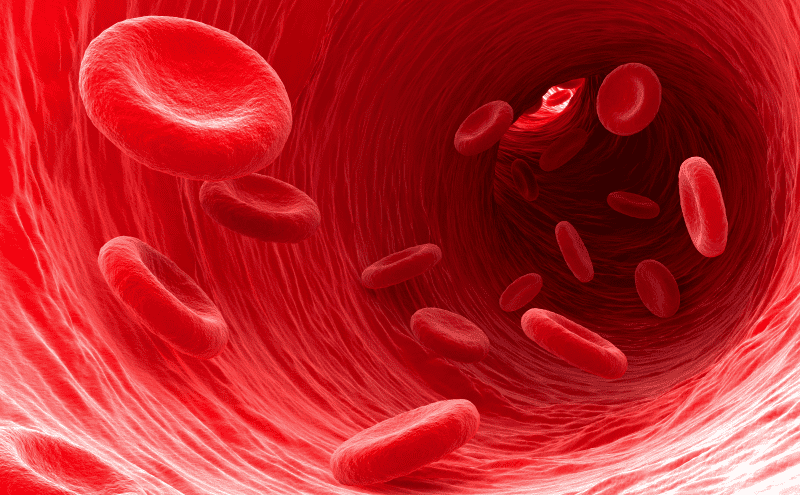
RBCs are disc shaped cells without nuclei (they cannot replicate) that carry gases. They have a compound called hemoglobin that binds with oxygen or carbon dioxide (or carbon monoxide). The chemical appears red when bound to oxygen and bluish when bound to carbon dioxide.
They make up the majority of the solids in your blood.

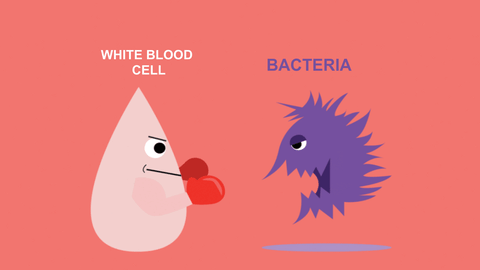
:max_bytes(150000):strip_icc()/macrophage_fighting_bacteria-56a09af03df78cafdaa32cb3.jpg)
White blood cells (WBCs) are huge cells that eat foriegn invaders. They are integral to the immune system. There are many different types of white blood cells.


Platelets are tiny bone fragments that begin blood clotting when they rupture:
When they break they begin a cascade reaction leading to fibers across the wound and a clot forming.
Our tubes are called arteries, veins, and capillaries.

Mostly red blood Mostly blue blood
Deep inside the body At the surface
Stiff and thick Limp and thin
Under pressure Muscles and valves move blood

The capillaries are the tiny, single-cell-thick tubes that connect the arteries and the veins. Much like the trachea and bronchioles, where gas exchange cannot happen until the tiny alvioli, nutrients cannot cross into the tissue until the enter the tiny capillaries.
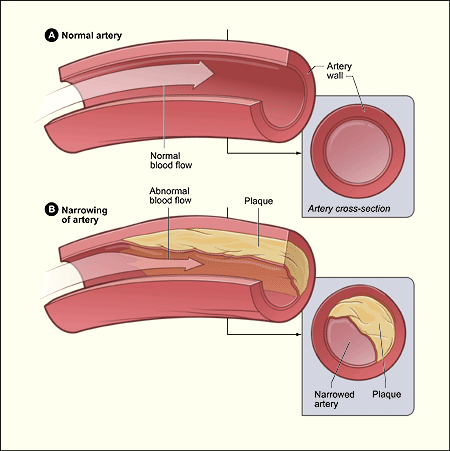
This fatty build up can constrict blood flow increasing blood pressure and stress on the heart. It also can rupture platelets leading to blood clots (heart attacks, strokes, and necrosis).
The best thing to clear this out is to exercise and get that blood moving! Eating right helps as well.
Our pump is the heart:
Some organisms have one chamber to their heart, others have two or three chambers. We have four (the most complex and efficient). Birds, mammals, and crocs & gators have four chambered hearts.

Blood travels in through the right atrium to the right ventricle, out to the lungs, then into the left atrium, then the left ventricle, and finally out to the whole body.
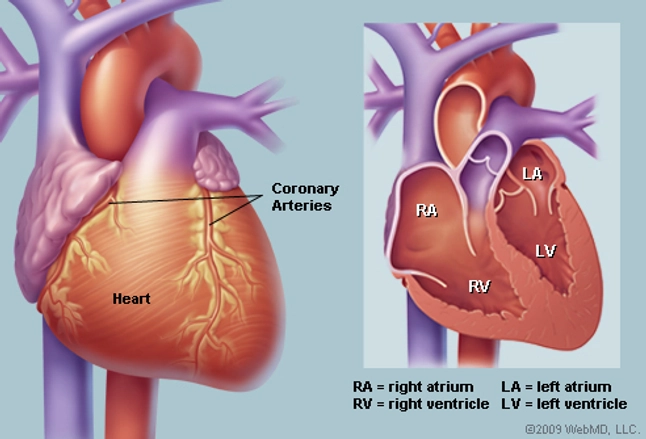



We will collect some data about heart rate: resting, 1 minute isotonic active, 2 minutes isotonic active, 1 minute dynamic active, 2 minutes dynamic active, etc. and look for trends / patterns.
Heart attack



